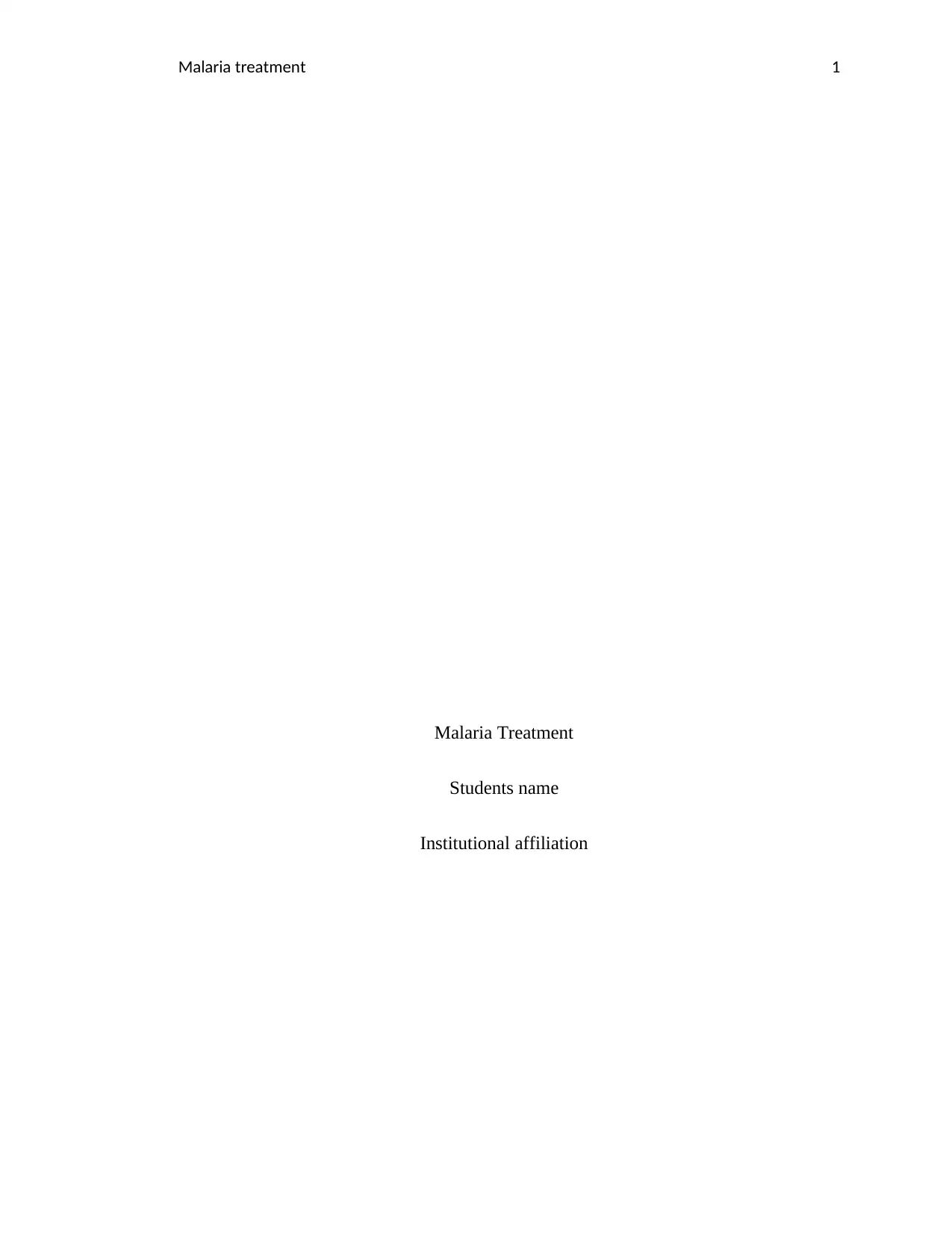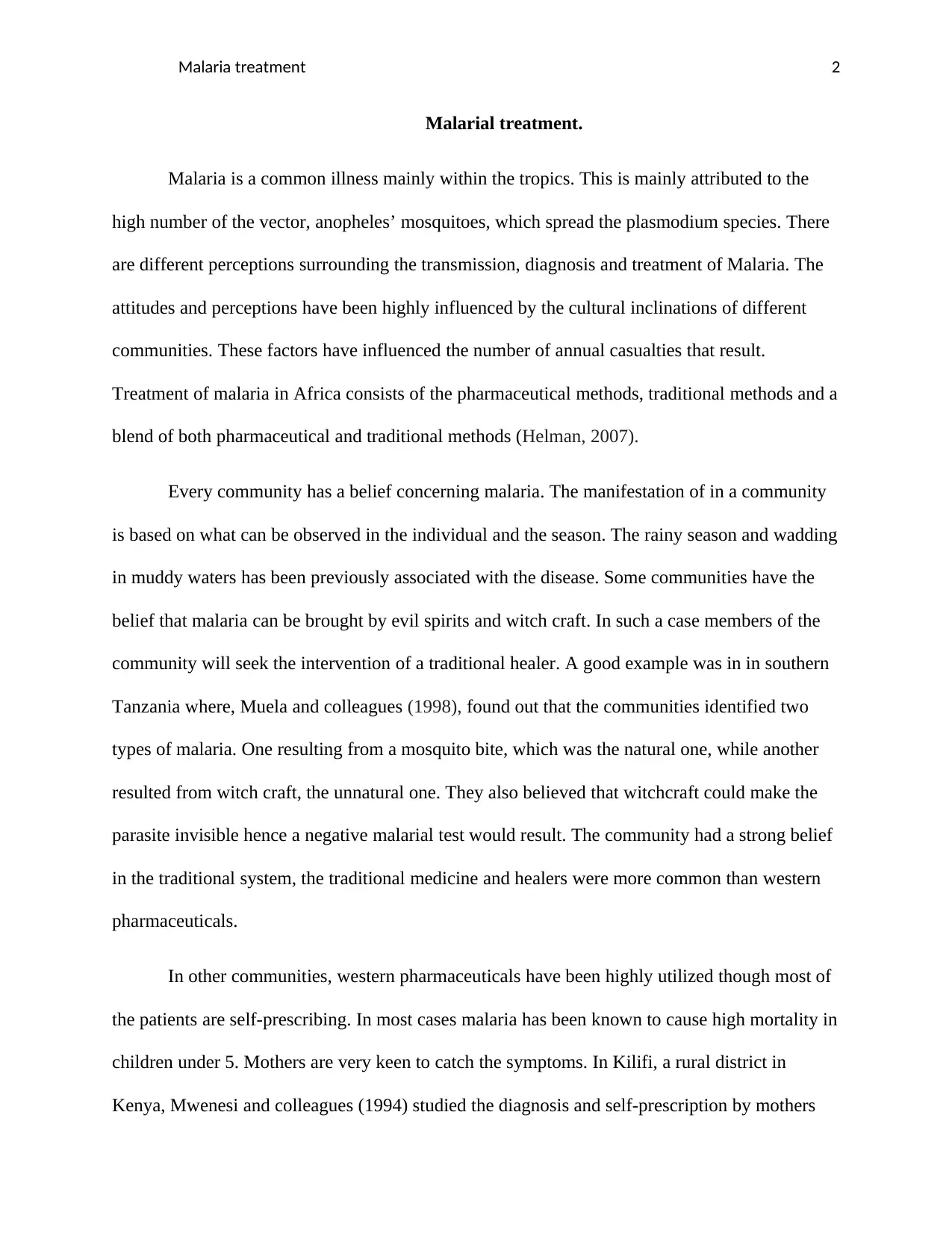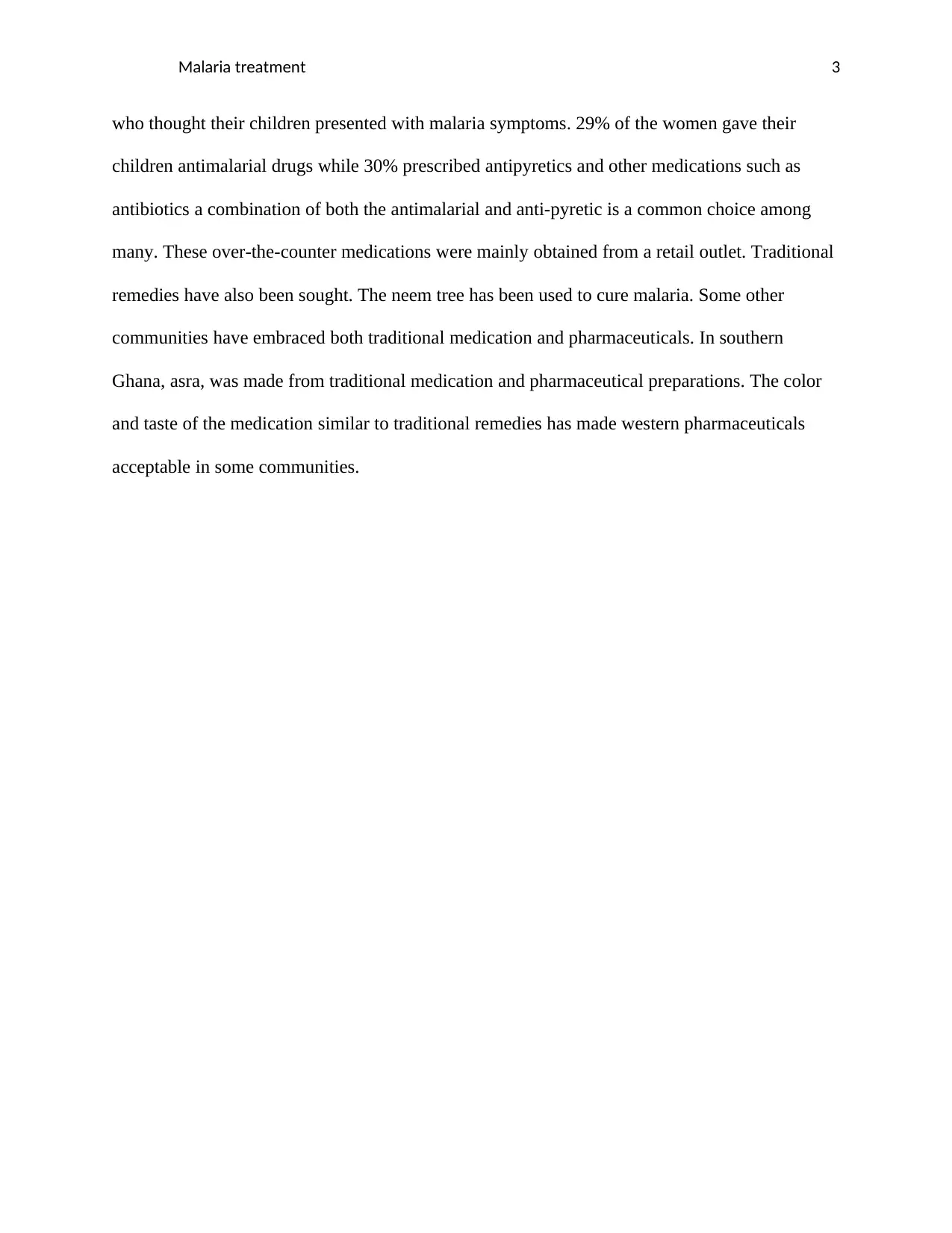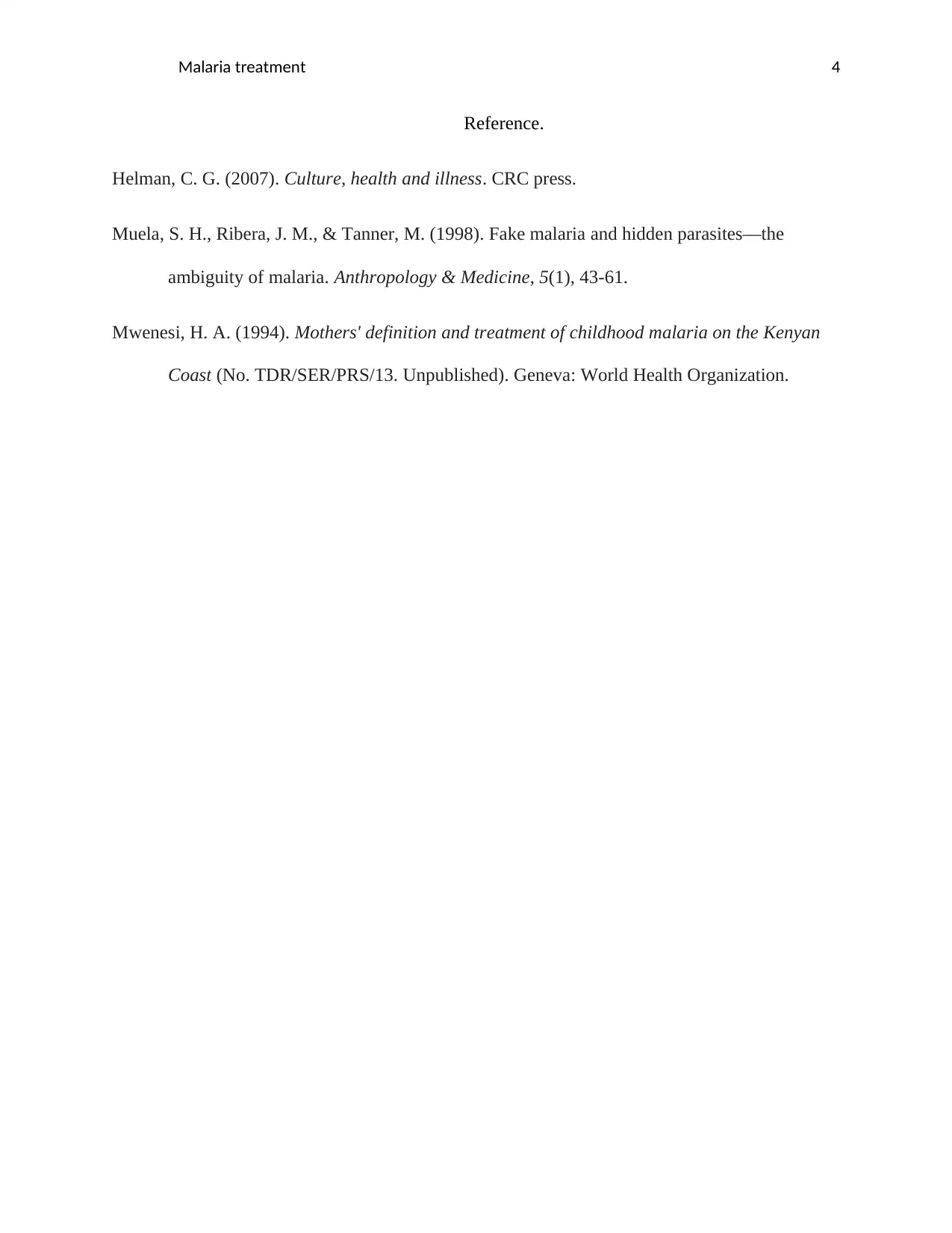Malaria Treatment: Cultural Influences, Practices, and Outcomes
VerifiedAdded on 2023/01/23
|4
|570
|38
Report
AI Summary
This report provides an analysis of malaria treatment, emphasizing the impact of cultural influences on the approaches taken to manage the disease. The report delves into the various perceptions and beliefs surrounding malaria, particularly within African communities, exploring both traditional and pharmaceutical methods. It highlights how cultural factors, such as beliefs in witchcraft and the role of traditional healers, affect treatment decisions and outcomes. The report references studies that examine the use of both traditional remedies and modern medicines, and explores the self-prescription of antimalarial drugs and other medications. The report also examines how communities have integrated traditional and pharmaceutical approaches, and the role of over-the-counter medications in treating malaria. The report references several studies which highlights how cultural beliefs influence the utilization of medications. It explores the use of remedies like the neem tree, and the blending of traditional and pharmaceutical methods, as well as their impact on the treatment of malaria.
1 out of 4





![[object Object]](/_next/static/media/star-bottom.7253800d.svg)